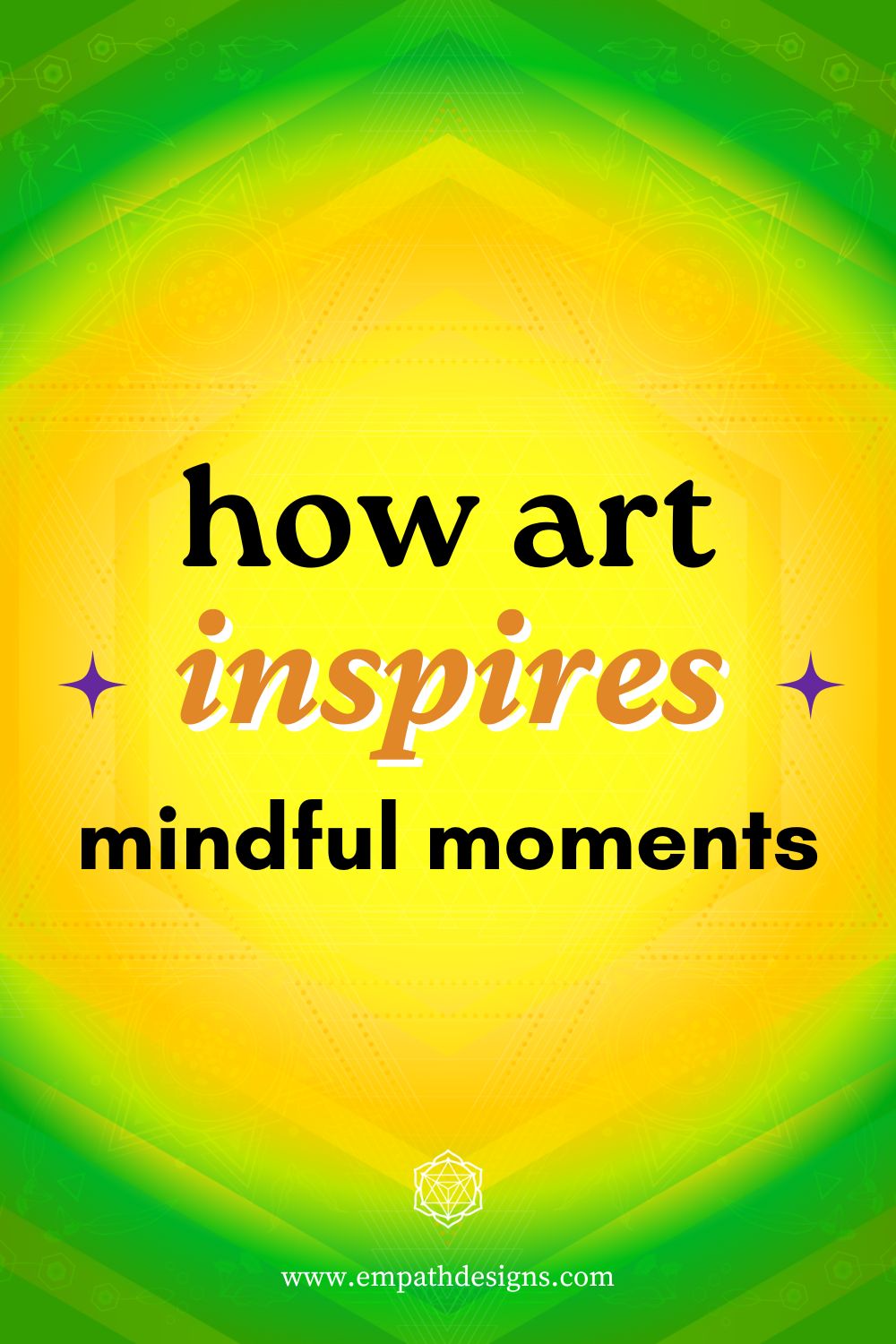In the hustle and bustle of modern life, finding moments of calm and centeredness can be a challenge. However, there's a beautiful and accessible way to cultivate mindfulness – through art.
Art has the power to transport us to the present moment, allowing us to connect with our emotions, spark creativity, and experience a sense of serenity. In this blog post, we'll delve into the profound connection between art and mindfulness, and explore how you can seamlessly integrate this practice into your daily life.

How Art Inspires Mindful Moments
Have you ever found yourself captivated by a piece of art? Lost in its colors, shapes, and details? This experience isn't just about visual aesthetics; it's an opportunity to immerse yourself fully in the present moment. As you gaze at a painting, photograph, sculpture, or any form of art, you're invited to set aside distractions and engage your senses in a way that fosters mindfulness.
Art: A Powerful Tool for Mindfulness
Surprisingly, art serves as a fantastic tool for practicing mindfulness. Beyond its decorative appeal, art has the potential to be a gateway to a heightened state of awareness. The act of intentionally looking at art encourages us to focus on the here and now, leaving behind worries about the past or uncertainties about the future.

Diverse Forms of Art for Mindfulness
Art comes in countless forms – from paintings and photographs to wood carvings and tapestries. The possibilities are limitless, and there's something for everyone. Whether you're admiring a Renaissance masterpiece or marveling at the intricate details of a modern sculpture, the practice of mindfulness can be woven into your experience.
The Transformative Effects of Mindful Art Viewing
When you engage in mindful art viewing, you embark on a journey that can:
- Bring Focus to the Present Moment: Gazing at art requires your full attention, which naturally pulls you into the present moment.
- Connect You with Your Emotions: Art has the power to evoke a wide range of emotions. By acknowledging these emotions, you practice emotional awareness.
- Ignite Creativity and Imagination: Observing art can stimulate your creative faculties, allowing you to explore new ideas and perspectives.
- Reduce Stress and Promote Relaxation: The act of mindful art appreciation has a calming effect on the mind, reducing stress and anxiety.
- Cultivate Calmness and Inner Peace: The serene beauty of art can create a sense of tranquility and inner peace.
- Elicit Joy and Pleasure: The simple act of looking at a piece of art can bring genuine joy and pleasure to your day.
Practicing Mindful Art Viewing
The next time you find yourself before a piece of art, take a moment to fully engage your senses and cultivate mindfulness. Begin with a few cleansing breaths to ground yourself in the present moment. Then, follow these steps:
-
Observe and Appreciate: Gently observe the details, colors, textures, and shapes within the artwork. Allow yourself to appreciate its aesthetics without judgment.
-
Cultivate Presence: Focus your attention solely on the artwork. Let go of distracting thoughts and external pressures, immersing yourself fully in the experience.
-
Sensations and Feelings: Pay attention to any physical sensations, thoughts, or emotions that arise as you gaze at the art. Acknowledge them without getting entangled in them.
-
Non-Judgmental Awareness: Approach the experience with an attitude of non-judgment. There's no right or wrong way to feel – your experience is valid.

Let Art Be Your Mindful Guide
Your chosen piece of art can serve as a gentle guide in your mindfulness journey. Allow it to lead you towards a greater connection with the present moment, fostering self-awareness and tranquility. Whether you find solace in the strokes of a painting or the intricate details of a sculpture, let the experience of mindful art viewing be a source of daily rejuvenation.
Incorporating mindfulness into your life doesn't always require formal meditation. By integrating art appreciation into your routine, you can infuse your days with moments of stillness, presence, and creative wonder.
So, the next time you encounter a work of art, remember that you're not just observing – you're mindfully immersing yourself in the beauty of the here and now.
Frequently Asked Questions
1. Can any form of art be used for mindfulness practice? Absolutely! Mindful art viewing can be practiced with a wide variety of artistic creations. Whether it's a painting, sculpture, photograph, or even a piece of music, the key is to engage your senses and focus your attention on the present moment. Choose art that resonates with you personally, as this will enhance your overall experience and make the practice more enjoyable.
2. I'm not an art expert. Can I still practice mindful art viewing? Absolutely, you don't need to be an art expert to practice mindful art viewing. In fact, this practice is all about personal experience and connection. Approach the artwork with an open mind and a willingness to engage with your senses. The goal isn't to analyze the art, but rather to experience it fully in the present moment, appreciating its beauty and allowing any emotions or thoughts to arise without judgment.
3. Can mindful art viewing replace traditional mindfulness meditation? Mindful art viewing can complement traditional mindfulness meditation, but it doesn't necessarily replace it. Both practices have their unique benefits. Mindful art viewing provides a creative and sensory-focused way to cultivate mindfulness, while traditional mindfulness meditation involves focusing your attention on your breath, sensations, or a specific point of focus. You can integrate both practices into your routine, allowing for a well-rounded approach to mindfulness that suits your preferences and needs.
Remember, the essence of mindful art viewing is to find moments of stillness and presence in the midst of a busy world. It's a journey that unfolds through your personal connection with art and your willingness to explore the depths of your own awareness.




Leave a comment